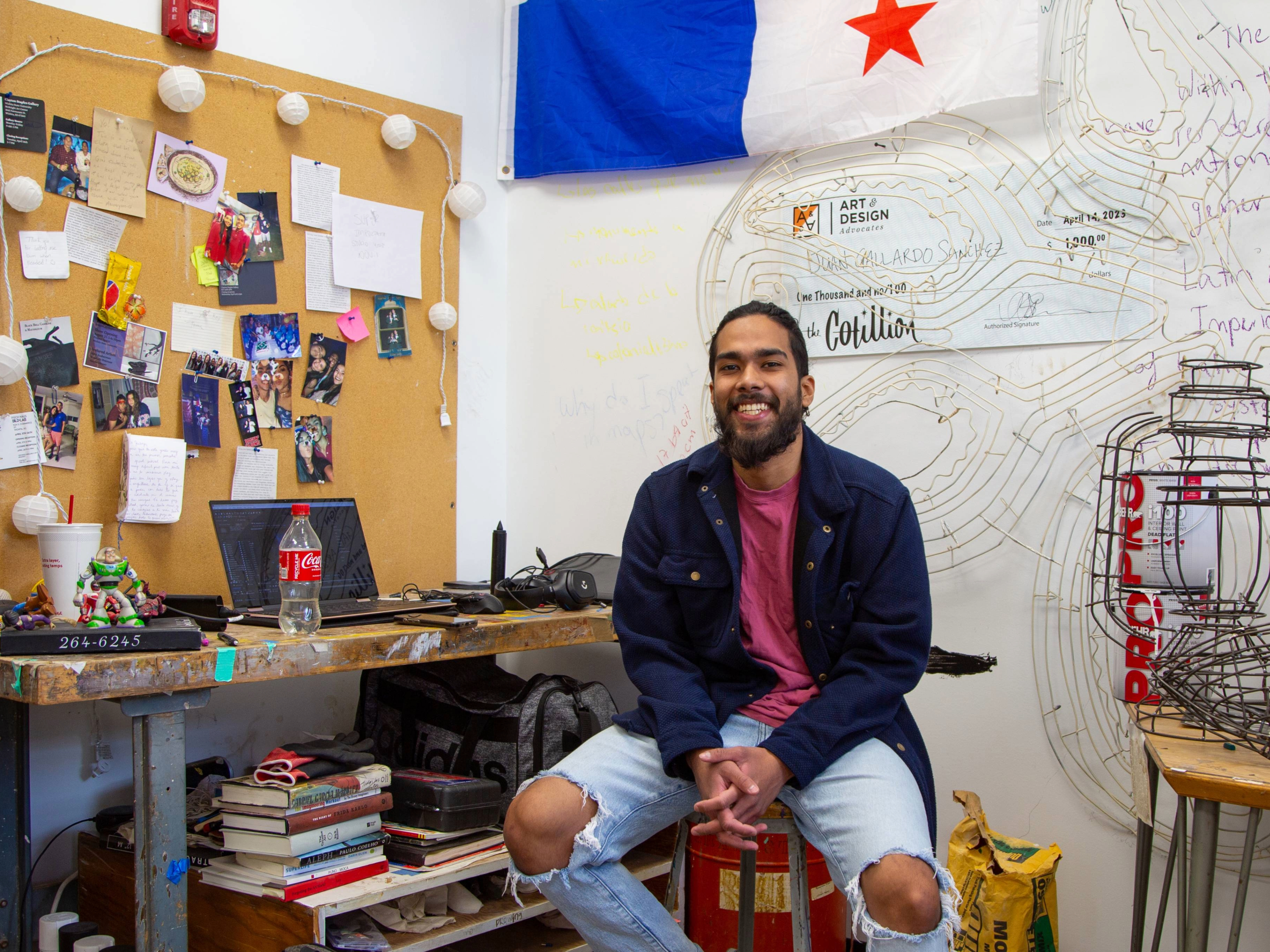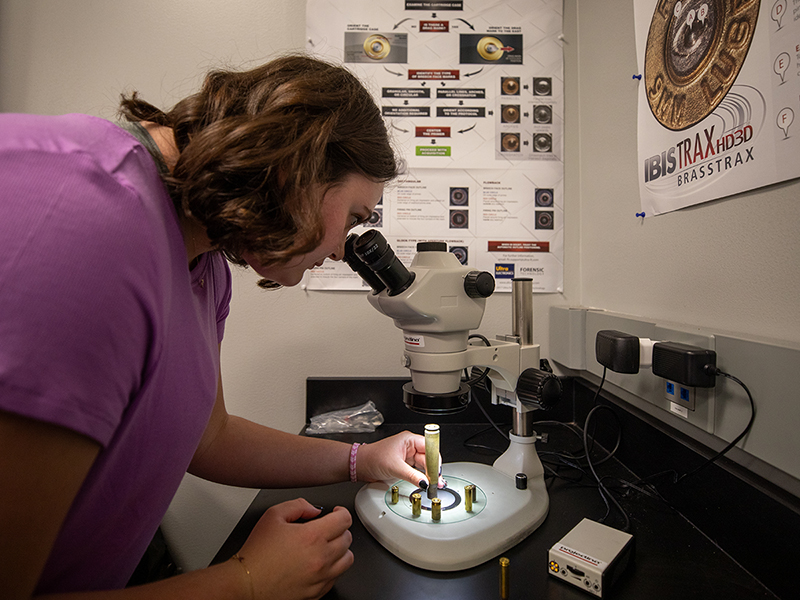Juan Gallardo Sánchez creates narratives that portray Latin America through a whimsical lens while retributing candor to literary inaccuracies. Originally from Panama City, Panama, Juan is graduating with his MFA in Studio Art with a concentration in photo media from Wichita State University’s School of Art, Design and Creative Industries.
What materials and processes do you use to create your work?
I consider myself to be an interdisciplinary artist—I’m an animator by training, welder, visual artist, but above all - a storyteller. I would say the main physical medium I use is steel wire that I cold bend then weld at angles to create these large, often representational, shapes. I cover these steel structures with fabric coated in “monster mud,” a combination of wall paint and mortar mix, that creates a solidified hold when dried. I then project found footage, self-produced animations, and simulations onto the forms – which requires a whole separate set of technical materials and processes. There are also sound elements associated with the pieces, too, like recordings of myself reciting narratives I’ve written.
What inspires your work?
Storytelling is the foundation of my work—it’s what motivates and dictates every decision that I make when creating a piece. I’m motivated by the stories of my family, friends, and home; good stories that I reflect on and cherish, and bad ones that I choose to learn from. For the most part, what motivates me at the moment are the more negative stories - negative in terms of things that have happened to my country.
I’m also drawing from this subjective experience that happens when you’re an immigrant. These stories implement things I was before I left my country with things I chose to accept as a part of me while I am here. How much of my humanity is comprised of things I am versus what was dealt or ascribed to me? There’s a lot I’m reflecting on.
Are all of these stories directly sourced from the people around you, or are some of them derived from historical recordings?
There’s a bit of both. There are stories in times of colonialism I might not be able to record any first-hand experiences of; but when discussing imperialism, not only are there historical recordings, I also have family members that were physically present to witness the events unfold.
Sometimes I also just read for leisure, and I find inspiration for research there. I’m very interested in magical realism, a literary genre that had its largest boom in Latin America. I read a lot of short stories by Gabriel García Márquez, who I consider to be the godfather of the genre. Essentially, magical realism implements fantastical elements into a narrative that’s grounded in our reality. The narrators use an assertive voice to relay strange events, but because they’re speaking so confidently, you as an audience don’t question the veracity of the events.
Do you consider yourself to be a Magical Realist?
I’m going to go ahead and claim it—I do consider myself to be a Magical Realist! Even within the writing that I use in my installations, there is that element of recounting the fantastical or abnormal.
You create work that explores subtopics of dual identity through a variety of mediums and techniques. Have you ever felt pressure to limit yourself to a singular perspective - whether that be when identifying yourself or by the mediums that you communicate through visually?
Creating this work requires a lot of vulnerability, but I also have to be realistic and accept the fact that the lived experiences of the viewer might limit their ability to initially relate to my work. For the longest time, I questioned if I should just abolish the stories of my past and conform to what I thought people would understand. These stories of where I’m from, all this political inequity and instability—those aren’t things I’m choosing to think about—that will always stay with me. It’s affected my country in so many ways: through the way stories are told in schools, the architecture – so many influences. I wasn’t forced to think about these things, but it was inevitable.
Now, I’m comfortable with claiming both parts of my identity; not relinquishing my past, but also accepting this new status of being an immigrant. I believe that my voice as an author and artist is to enact the role of an educator, to welcome anyone who wants to learn into the space. That’s what the core of storytelling really is: sitting down with someone and sharing experiences. At the end of the day, it’s about realizing we’re more connected than we think. Colonialism and imperialism, while not specific to Panama, are still practiced today, which is why I feel they’re important to talk about. While these stories are not the first, they can be the last; but they won’t be the last if we don’t talk about it.
Juan will be exhibiting his terminal project, “no se pa donde voy pero se de donde vengo,” at Harvester Arts by appointment, with an opening reception on Friday, May 3rd from 6-9 p.m.
Find more of Juan's work on his Instagram
All stories College of Fine Arts home






